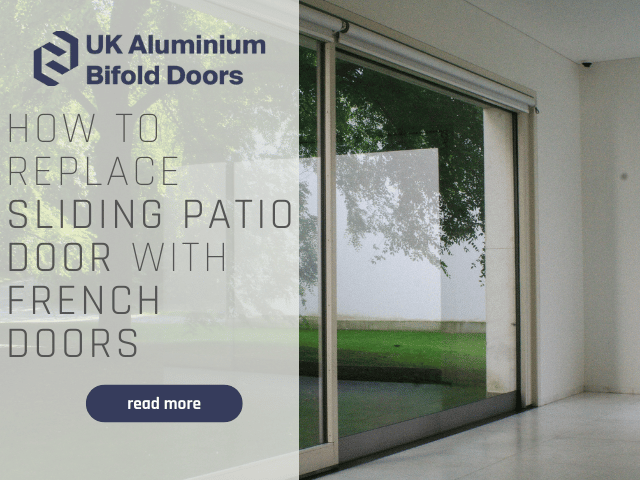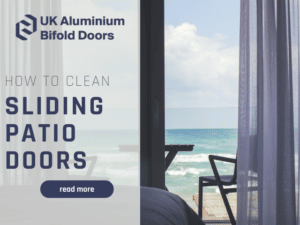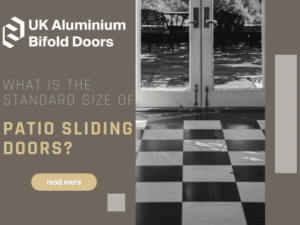Replacing your old sliding glass doors with a French door is a great way to enhance your home’s appearance while adding value. In contrast to a sliding door, these doors provide an element of class and elegance without stifling your decorative intent.
If you are looking to improve the style of your house, you can paint your sliding patio doors rather than replace them if you think it is a more cost-effective solution.
But, with so many design options on offer, it can be hard to choose which will enhance the functionality of your room without taking away from its beauty. Here are some things to consider when thinking about replacing sliding doors with French doors in your home.
Why Go For French Doors
Sliding door designs have a slim door frame, the opposite of the classic French door. This means the wide stile and rail windows of French doors have the potential to completely transform the look of your home.
If you don’t know what French doors are, they are large, outward-opening double doors. With their large glass panels offering offer unrestricted views, they’re a popular choice as a patio or garden door. Glass panels are housed in wooden frames to allow for plenty of natural light in your home, making it a popular choice as a patio or garden door.
French doors are available in a range of different sizes to suit different home styles and layouts.
How Much Do French Doors Cost?
Because French doors involve a more sophisticated design than ordinary sliding doors, they tend to be more expensive. Some French doors start at just a few hundred pounds, while others thousands.
The materials used to make the door will also affect the price – at the point of purchase as well as going forward. Custom-made French doors cost significantly more because they’re more difficult to produce.
Looking at aluminium vs uPVC French doors, you can expect a big price difference. uPVC French doors can cost between £500 and £600, but this varies depending on the supplier. Aluminium French doors can range from £1850 to £2200.
If you need more advice on aluminium doors, get in touch, and we’ll be happy to assist!
How Do French Doors Work?
French doors work much like most hinged doors. Depending on how you prefer it, they will swing open outwards or inwards.
They are typically installed as external doors leading to the outside. A bolt lock or more advanced mechanism generally secures this system.
You will be able to buy these doors mainly double-glazed. This is for security reasons and will also improve the energy efficiency of your home.
Things To Consider When Adding French Doors
They’re available in a variety of materials, including wood, uPVC and aluminium. Wood is generally avoided because it can warp if moisture gets in. Wooden doors always require more maintenance to keep them functional. Aluminium and uPVC are popular choices, mainly because of their respective security features.
Aluminium or uPVC
uPVC doors are durable, require little maintenance and are relatively cheap. But, as uPVC isn’t as strong as the other materials available, the frames need to be thicker to accommodate the same amount of glass.
Aluminium French doors are generally stronger and therefore can be built with thinner frames. This means more glass that will allow more light to filter through. When it comes to locking devices, you can choose from deadbolts, interlocking bolts, claw latches and shoot bolts.
You can visit our website to see the other stunning aluminium doors we have available, including sliding doors and patio doors. We can also help with door panels and windows.
Fitting Your French Doors
The most important part is to measure your doors properly. If you have done that, then everything else should be an easy job.
Should you have to fit a new frame, however, said frame will have to be installed into the opening for your sliding door first.
Check and double-check that the door is the right size. Follow the “measure twice, cut once” rule. Do not remove your existing frame until you are 100% sure the new one will fit in where the old sliding door opening is.
Remember, these doors are big, so having someone to help you will make the task of replacing sliding doors more manageable.
Widening an existing sliding door opening may entail electrical rewiring and structural alterations. It goes without saying that these jobs should only be undertaken by someone who is experienced. Hanging a new French door into an existing sliding door frame or is a much more doable project.
Hiring a professional to replace your sliding door with a French door is an option if you’re unable to tackle the job yourself. Many homeowners are hesitant to go down this route because of the costs involved. Sure, you will save money if you do the job yourself, but if done incorrectly, hiring an expert to fix your DIY mess might cost you more, considerably more.
Secure Your French Door
Make sure your external French doors are fitted with double glazing and a three-point locking mechanism for maximum security.
Any external door that is an entry, as well as an exit point into your home, should naturally become a security feature for your house as well. If you are unsure whether your French door is secure enough, we recommend calling in an expert to check.
Glazing Options For French Doors
Double-glazing is the standard when it comes to external French doors, as it helps to hold both sound and heat in a way that single-glazing cannot. Note, however, that not all double-glazing is the same; glass thickness and space between the two layers can affect efficiency.
Triple glazing is more effective than double glazing, but costs more and reduces the amount of light coming through. If you choose the right window glazing option you can increase your energy efficiency significantly.
Consider Building Regulations
When you replace sliding doors with French doors you must make sure that it will comply with the local building regulations. A French door can be installed without certification. But should you want to sell your property and the potential buyer asks for verification of said compliance, you could find yourself in a bit of a pickle.
Building regulations in the UK require compliance with certain standards when doors are fitted. Therefore, it is important to choose a qualified installer when fitting a French door.
But if you go down the DIY route, you will have to submit an inspection application with your local authority.
Is It Difficult To Install French Doors?
Fitting your own French door is much easier than installing an aluminium bi-fold door or sliding door. However, don’t do it yourself unless you have prior experience. After all, the door frame is what determines how well your door will fit.
When installing French doors, the most important thing is to plan. Consider the space around the door as well, such as the door frame.
To determine the swing space necessary for your door, measure a radius around the door’s pivot on either side of the jamb. You may also opt for a screen door system or curtains and blinds for added privacy.
Even perfectly installed French doors will occasionally need adjusting. And again, unless you have the requisite experience, get professional help.
How To Adjust French Doors
In some cases, draughts is a result of doors not being fitted properly, creating a gap that allows cold air to seep through and warm air to escape.
To fix this, set the hinges into a packer to pull your doors together and narrow the gap. If you have uPVC doors, remove the cover and use a hex key to alter the hanging position of the doors.
Weatherproofing Your French Doors
There is a common misconception that French doors are less weatherproof than sliding doors. However, a French door can be sealed just as well as sliding glass doors. And if they’re sealed correctly and sit properly in the door frame, there shouldn’t occur any weather-related issues.
Seal the gaps between the door and your opening correctly. Here is how to check whether it is sealed: Slide a piece of paper under the door, then close it and pull it out slowly. The level of debris on the paper indicates the tightness of the seal and whether you need to readjust it or if there are any gaps to still be sealed.
FAQs
My French doors won’t lock?
There might be a few reasons why this is happening. Check if there’s any debris or ice clogging the lock. The door might have dropped slightly, causing the locking mechanism to be misaligned.
A good way to check is to open the door and try to lock it… if the lock works fine with the door open, it’ll need some adjusting. If the lock still doesn’t work, then the mechanism itself is faulty and will likely need replacing.
Why do my French doors leak?
Leaks can happen if the sealing holding the glass is faulty or defective. Sealing the edges of your French door will prevent water from entering your home and prevent draughts.
Why won’t my French doors close?
uPVC doors tend to drop slightly after a few years. This can lead to a number of functional problems, including doors not closing properly or the locks not aligning properly. It’s a relatively easy fix, though. Simply use an Allen key and rotate to the right to push the door away from the hinge, or to the left to pull it closer. Using a spirit level to see exactly where your door is out of alignment is a good idea.
Are French doors practical?
French doors function exactly the same as almost every other door. No complex mechanisms, and no intricate moving parts, unlike a sliding glass door.
Are French doors soundproof?
Modern double glazing is more sound-resistant than a solid-wood door. French doors with double glazing are well-equipped to reduce noise pollution. The quality of the seals is also a factor in that high-quality seals will be able to filter out large amounts of noise.






